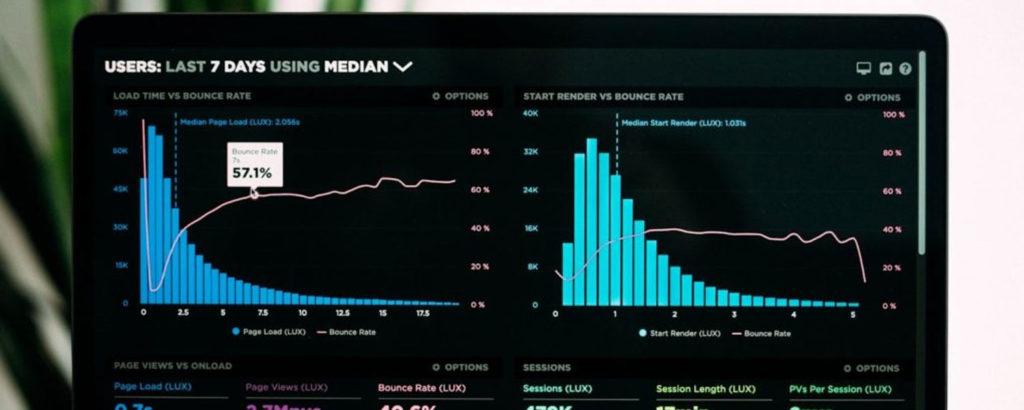
SOURCE: Robin Pierre Unsplash
Remember the term information super-highway from the late 1990s? It seems like just yesterday that we had dial-up modems screaming at us. Your network, however, is still a set of highways between devices with data flowing between nodes. But how do you keep track of this data highway? The answer is network traffic monitoring. It’s vital to ensure that devices are processing traffic efficiently and that you block any nefarious traffic!
Today’s networks are even more complex, albeit quieter, than in the 90s. As such, you need a traffic monitoring tool to help you sift through all your network data efficiently and effectively. In this article, I’ll take you through the benefits of a network traffic monitor, how to monitor network traffic, and discuss 9 essential features of any good tool. Then, I’ll review the top 3 solutions on the market today. First, I’ll define what network traffic monitoring is.
What Is Network Traffic Monitoring
Network traffic monitoring involves assessing, diagnosing, and resolving network traffic-related issues. A person or program tracks traffic on your network to assess what kinds of data are being sent and received. Additionally, monitoring allows you to determine how much bandwidth your super-highway lanes use.
Here’s an analogy to help you understand network traffic monitoring. Your bandwidth is the capacity at which your network can transmit data. The larger the bandwidth, the more traffic your network can handle, excluding device or platform bottlenecks.
As you’ll know, bandwidth is measured in megabits per second (Mbps). For instance, you might have a bit rate of 200 Mbps down and 100 Mbps up. An internet service provider (ISP) might, for instance, give you 200 Mbps down. In this heavily simplified scenario, traffic to each device is decreased by the number of devices you have connected. Essentially, if you add four devices to the network, each will receive 50 Mbps per device.
Now, the previous example was a simple one. But this isn’t the case for most networks today. Networks are increasingly complex, and monitoring them to determine the bottlenecks and issues will provide you with a few benefits. I’ll discuss those next.
3 Benefits of Network Traffic Monitoring

SOURCE: Flickr
Let’s quickly take a look at some of the benefits you’ll gain from network traffic monitoring below.
1. Optimize Bandwidth
Your devices have the potential to hog your bandwidth. With traffic monitoring in place, you’ll see what’s slowing down your network. As a result, you’ll be able to fix it to distribute your data bandwidth more evenly.
2. Monitor User Activity
The weakest link in your security is the user, who can inadvertently allow malware into the network with phishing emails. You can track your audit trails with network monitoring. Here, you’ll be able to see who’s been updating the databases or making changes to files, etc. By checking your audits, you’ll be able to identify malware and other cyber threats.
3. Enhance User Experience
An administrator’s worst nightmare is receiving tickets and calls from unhappy users. But, when administrators monitor network traffic, they can proactively fix slow speeds and identify intrusive malware before users complain. Monitoring network traffic is vital for ensuring your network is optimized and providing error-free and quick service to your users.
So we’ve covered the benefits, but how do you actually monitor network traffic? Let’s see how to best monitor your data next.
How to Monitor Network Traffic
So when we get down to brass tacks, let’s break down how to monitor your traffic and data effectively.
1. Choose Your Data Type
First, you need to choose what kind of data you want to monitor. This will help you get a grip on your data visibility. Three types of data exist: flow, packet, and Wi-Fi. Flow data, the most common, allows bandwidth and data packet tracking. Next, you have packet data, which is extracted from network packets to view how your users use your services. You’ll also be alerted to any malware at this level. Lastly, Wi-Fi data is any data and traffic going over Wi-Fi. You can monitor any or all of these, but ensure you have sufficient resources.
2. Identify Main Applications
Once you’ve picked your data type, it’s time to determine how users access your network. You’ll want to employ a network topology mapper to map real-time data from devices, applications, interfaces, VPNs, etc. The network topology mapper will visualize your network and allow you to quickly monitor and weed out suspicious usage.
3. Use A Network Monitoring Tool
Several network monitoring tools provide you with total visibility of your network traffic and security. We’ll get into what these tools do in the section below, as they can vary from tool to tool.
Let’s look at the features you want in any good network monitoring tool.
9 Network Traffic Monitoring Tool Key Features

SOUCE: Wikimedia
In this section, I’ll review some features you want to look for when shopping for network traffic monitoring tools.
1. Network Traffic Control
Network traffic control involves controlling bandwidth usage and managing your network traffic to prevent unwanted spikes and delays. Moreover, network traffic bottlenecks often result in new administrators adding more infrastructure to the business. Maintain your network with a network traffic control system to improve your return on capital investment. In short, you’ll be able to provide a better experience to your users and help the business turn a greater profit.
2. Network Traffic Analysis
Network traffic analysis (NTA) is a process of assessing individual network metrics to understand the overall health of your system and helps find threats. NTA identifies threats proactively by searching for abnormal user and network usage behavior. Most solutions integrating NTA proactively predict usage, allowing administrators or intelligent utilities to optimize traffic routing. Likewise, possible threats are flagged to administrators and quarantined.
3. Network Traffic Measurement
Setting a baseline for optimal traffic speed on your network is paramount. If you don’t know how your system performs normally, you’ll be unable to prove that you’ve improved traffic speeds. When using network traffic measurement, you’ll know there might be an issue when that number is off. This will prompt you to investigate and take action accordingly. Without a network traffic management solution, you’d be hard-pressed to find issues related to your network bandwidth.
4. Trace Network Traffic
Tracing your network’s traffic allows you to see where data packets are coming from. In turn, you’ll be able to determine if something is amiss with the source of that data. Knowing where the data originates is vital to keeping your network healthy and secure. To this end, always get a network traffic monitoring solution that enables you to trace traffic data.
5. Locate Network Traffic Issues
Just like when an accident on the highway causes heavy traffic, you’ll want to know where your traffic bottlenecks are so you can fix them. Time is precious, so a network traffic solution that can locate and flag issues effectively is essential. For instance, a bad gateway can inhibit data flow that previously worked fine. With network monitoring, you’ll be able to see and pinpoint these issues and take action quickly.
6. Displaying Network Traffic
Network data visualization makes it much easier to understand what’s going on in your network. You can assess a network from a command prompt, but it’s often time-consuming to get all the facts about what’s going on with your network. Thus, selecting a network traffic monitoring tool that visualizes overall traffic health and lets you see individual communications can help you resolve issues faster. Always try solutions before you buy them to check how easy it is to efficiently sift through network traffic; the faster and easier, the better. In short, it’s easier to pinpoint where the issue is so you can fix things when you have a problem.
7. Flow-Enabled Device Availability
Flow-enabled devices can interface with your network monitoring tools to give you an accurate picture of how the data flows to and from a device within your network. Flow monitoring is possible through the use of proprietary protocols similar to HTTP across the network to communicate with connected devices. Understanding flow at each endpoint allows you to better manage network traffic or justify further CapEx allocation. That said, you must ensure your monitoring devices are all compatible or from the same vendor to use the proprietary protocol.
8. Real-Time Data vs Historical Data
Real-time data can give you a snapshot of your network, but you’ll also want to have historical data logs. Historical data will allow you to see trends over the long term and just how well your network is functioning over time. This will help you make changes and fixes to improve your network performance going forward.
9. Full Packet Capture
Capturing and inspecting complete data packets for security reasons is vital to any network. By capturing packets, you can analyze them for security threats, and identify network congestion and data/packet loss, to name a few benefits. Security is the number one issue any network faces today, so it’s crucial you invest in a tool with this capability.
With these important features in mind, let’s discuss the best tools on the market for your network monitoring needs.
Top 3 Network Traffic Monitoring Tools
Here are 3 great tools that can help monitor your network traffic and protect yourself from any intrusion. The following are listed in no particular order.
1. SolarWinds NetFlow Traffic Analyzer

SOURCE: SolarWinds
SolarWinds NetFlow Traffic Analyzer is a real-time network monitoring tool and data usage reporting solution. NetFlow Traffic Analyzer gives you the following benefits:
- Provides network visibility
- Monitors bandwidth
- Has application traffic alerts
- Analyzes network traffic analysis
- Has VMware vSphere support
- Provides a performance analysis dashboard
- Includes advanced application recognition
Pricing starts at $1,072, with a free 30-day downloadable trial.
2. Paessler PRTG Network Monitor

Paessler PRTG Network Monitor allows you to monitor your IT infrastructure with state-of-the-art technology. Moreover, this on-premises solution gives you total control over how you configure it as well as the following:
- Has a central management console
- Is an all-in-one monitoring tool
- Provides complete customization
- Has high availability
- Includes renewable maintenance on request
- Provides alerts and notifications
- Has failover cluster compatibility
Pricing starts at $1,799 per server license.
3. GFI LanGuard

GFI LanGuard enables you to manage and maintain endpoint protection across your network. It gives you visibility into all facets of your network and includes the following features:
- Assesses network vulnerability
- Detects cyber threats with packet monitoring
- Fixes exploits with automated patching
- Is easy to use and implement to help you work efficiently
- Has automatic network detection
- Allows you to distribute management to different teams
- Provides automatic network security reports for auditing and regulatory compliance
Pricing starts at $26.33 per node per year.
Congratulations! You now have everything you need to implement your own network traffic monitoring tools to improve your business’s security.
Final Thoughts
The 90s were three decades ago, yet network traffic monitoring remains vital to administering a network, so users get the best service possible. Networks have become wider, yet traffic jams still occur with more data and devices clogging up the highway. That said, it’s not all doom and gloom. In fact, monitoring and maintenance are easier than ever with highly autonomous network traffic monitoring tools.
Search for solutions that optimize traffic, monitor usage for threats, and improve end-user experience. If you want the best network traffic management tool, get one that assesses traffic flow using a flow-based protocol. That said, ensure all monitoring devices like gateways and routers support the protocol. Better yet, use hardware from the same vendor to reduce the risk of incompatibility issues.
Network traffic monitoring tools are powerful solutions that can assess every aspect of network traffic and automate optimization, alerts, and patching. Consider integrating a network traffic monitoring solution as soon as possible to streamline your routine activities, find threats faster, and ensure your users get the best performance out of the network. Once you have one, you’ll wonder how you ever functioned without one!
Learn more about network monitoring and similar topics using our FAQ and Resources section below.
FAQ
What is network traffic monitoring?
Network traffic monitoring looks specifically at the traffic that flows between your devices in your network and how it interacts with your devices. By monitoring and visualizing that data, you’ll see what your users are doing and what changes they’re making.
What types of network monitoring are available?
Four types of network monitoring exist; availability monitoring, configuration monitoring, performance monitoring, and cloud infrastructure monitoring. That said, network monitoring types are grouped into the general category of network monitoring.
What is LAN monitoring?
LAN Monitoring is monitoring all the devices, computers, printers, servers, routers, bridges, etc., on your network and can know their status at any given moment. You can get updates when devices go offline or have a high traffic volume, etc. It puts your devices at your fingertips.
What is network management?
Network management is the management of data and traffic across a network. In this case, we are not looking at the devices but rather the data that crosses them. However, you will want to combine LAN monitoring with network management in any good IT setup.
What are data visualization and monitoring?
Data visualization looks more at the application side of things than the hardware and devices. However, in most cases, this data can be combined into one tool or platform for easy access and monitoring.
Resources
TechGenix: An Article on Traffic Shaping and Policing
Learn the differences between traffic shaping and traffic policing.
TechGenix: An Article on Network Segmentation Best Practices
Find out the best practices of network segmentation.
TechGenix: An Article on Network Performance Monitoring
Explore the world of network performance monitoring and come away with new ideas.
TechGenix: An Article on Network Monitoring
Learn more about using network monitoring to map your network.
TechGenix: An Article on Network Vulnerability Scanners
Learn about the top 5 Network vulnerability scanners.



